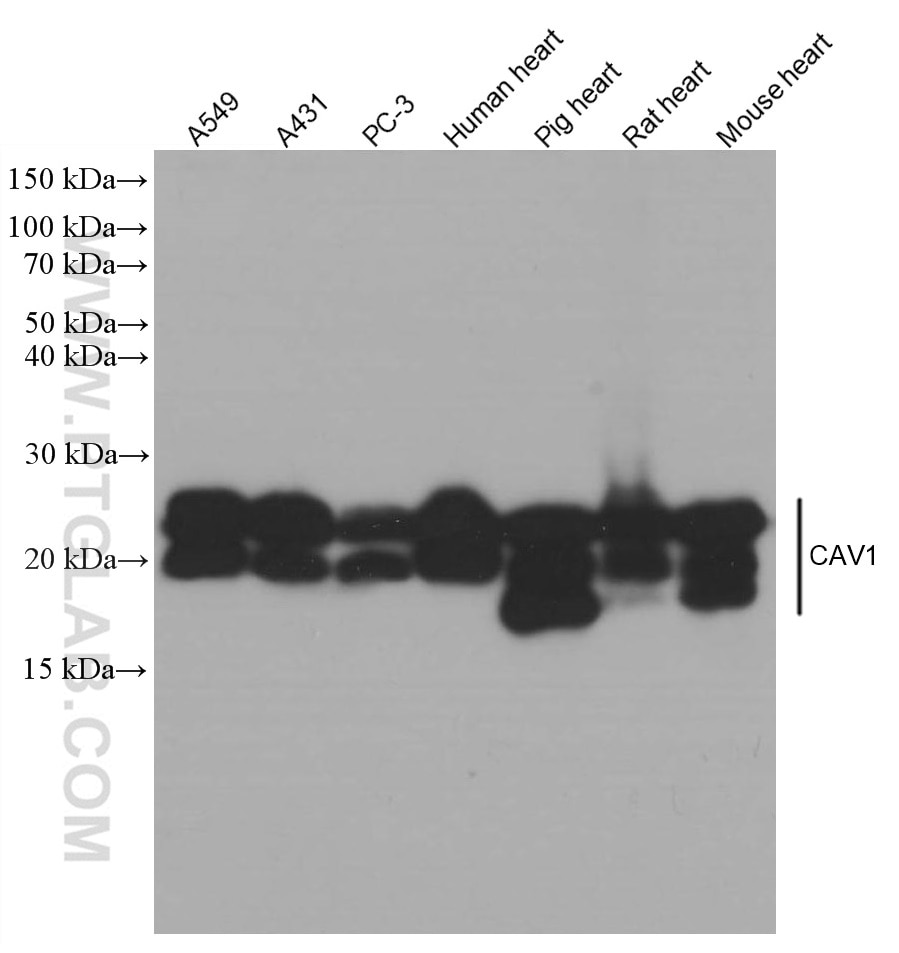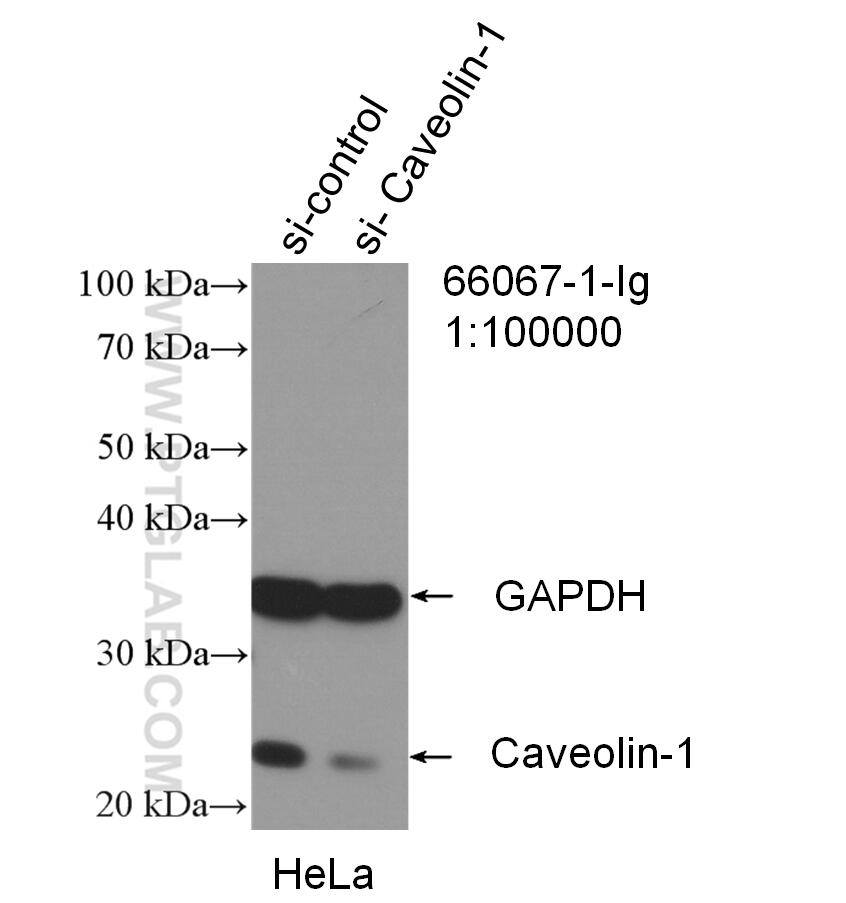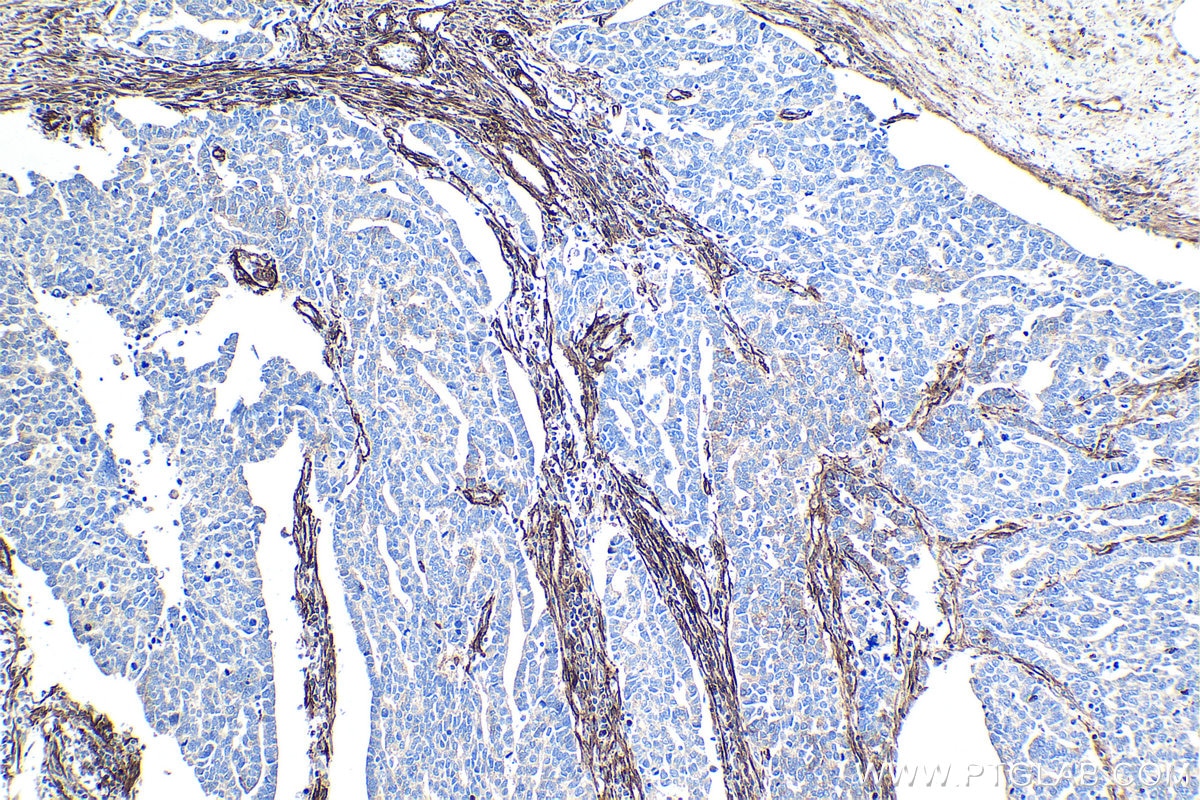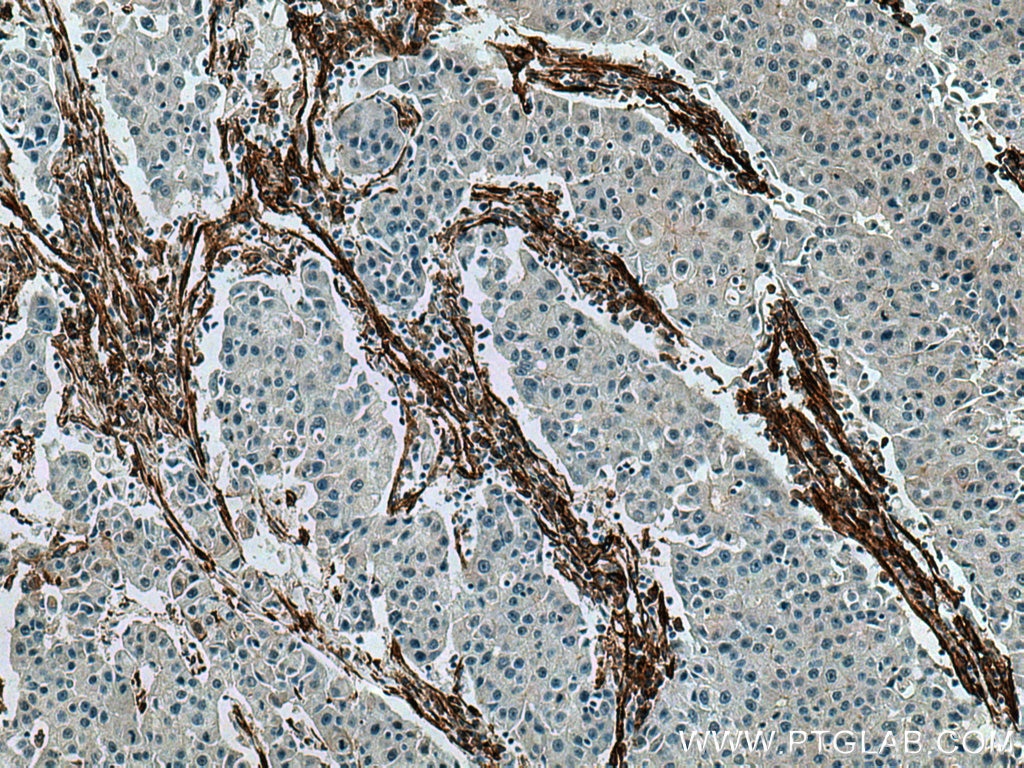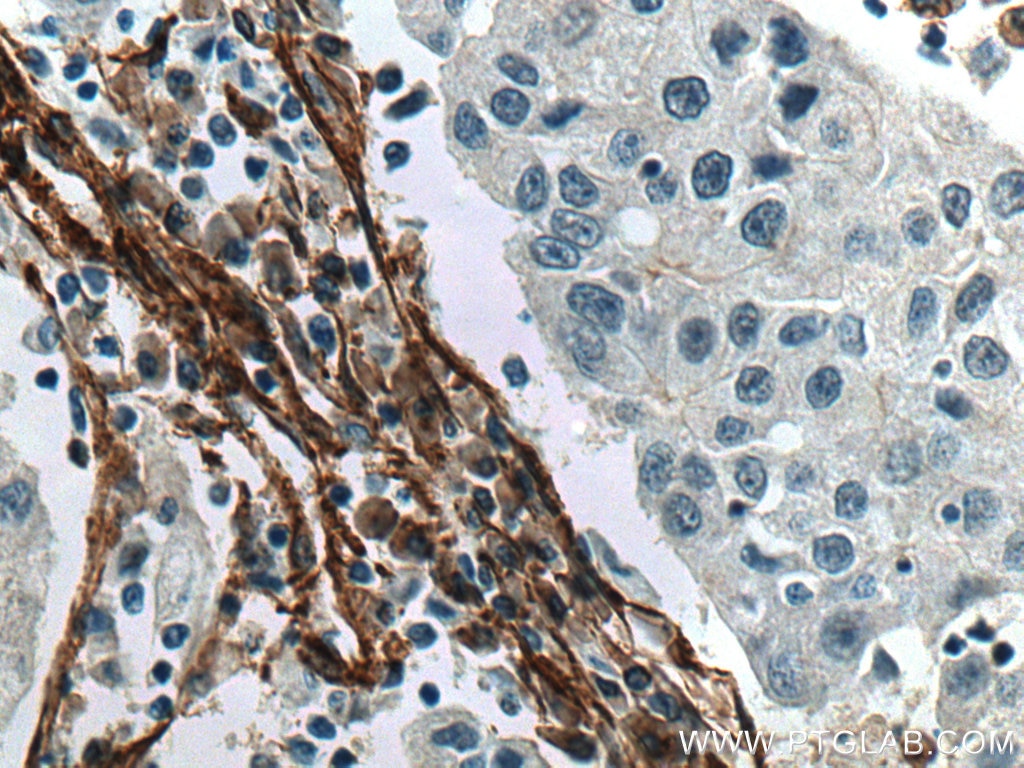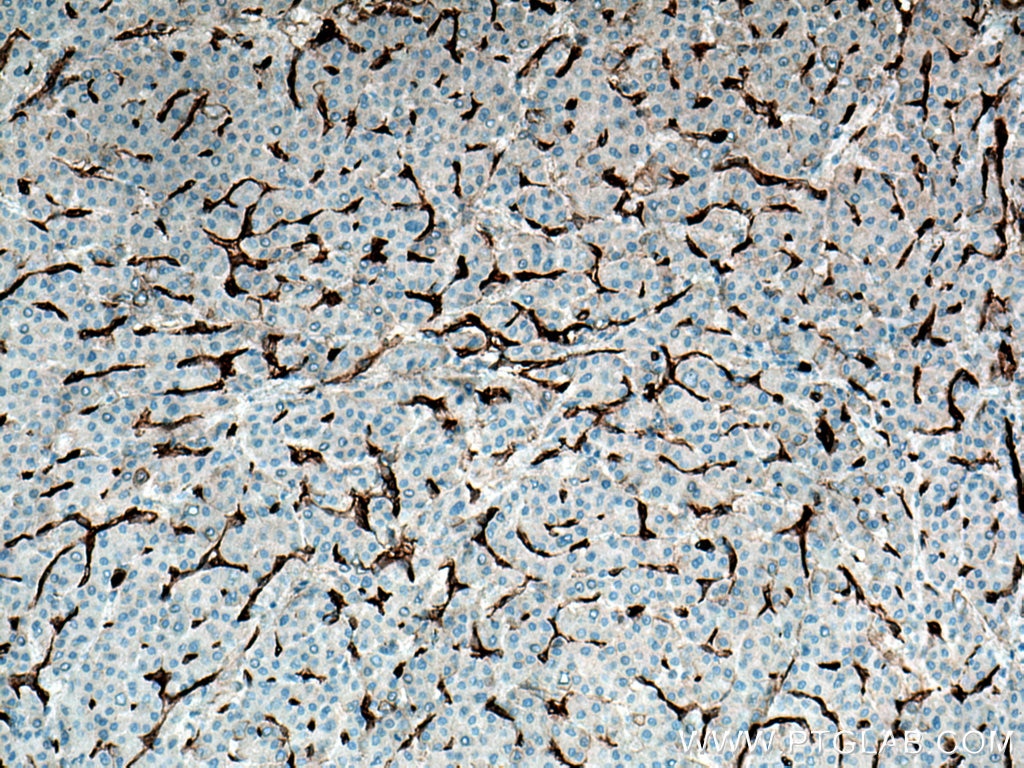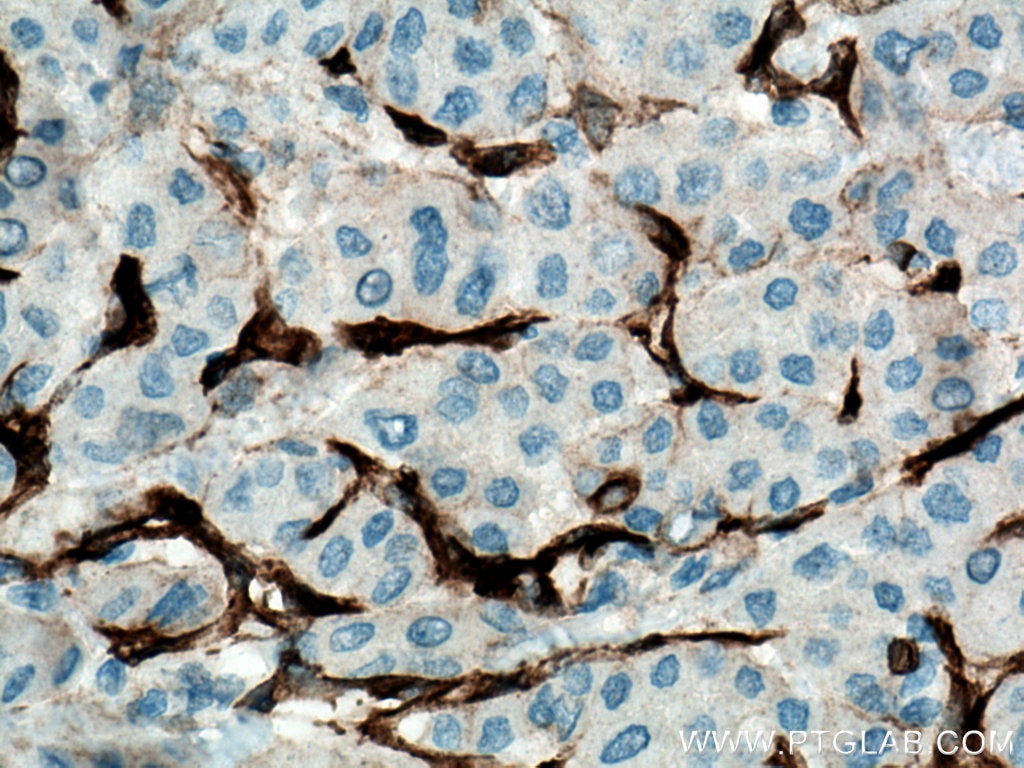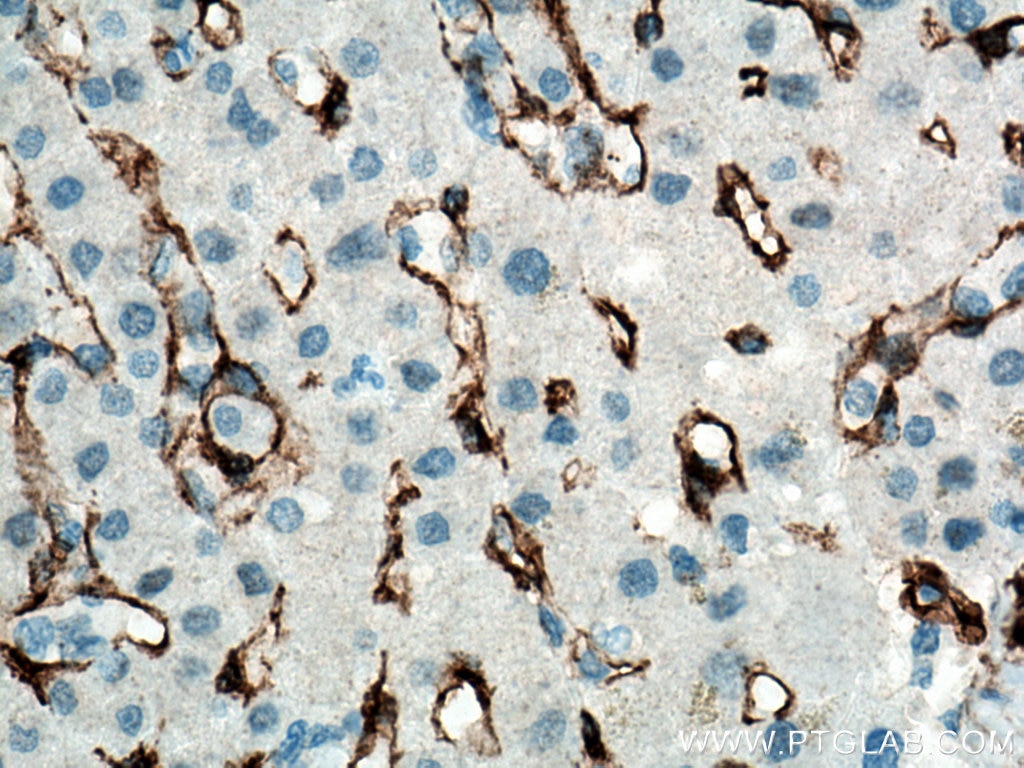- Featured Product
- KD/KO Validated
Caveolin-1 Monoklonaler Antikörper
Caveolin-1 Monoklonal Antikörper für WB, IHC, IF/ICC, IF-P, ELISA
Wirt / Isotyp
Maus / IgG1
Getestete Reaktivität
Hausschwein, human, Maus, Ratte und mehr (3)
Anwendung
WB, IHC, IF/ICC, IF-P, IP, ELISA
Konjugation
Unkonjugiert
CloneNo.
6C2B2
Kat-Nr. : 66067-1-Ig
Synonyme
Geprüfte Anwendungen
| Erfolgreiche Detektion in WB | A549-Zellen, A431-Zellen, HeLa-Zellen, humanes Herzgewebe, Mausherzgewebe, PC-3-Zellen, Hausschwein-Herzgewebe, Rattenherzgewebe |
| Erfolgreiche Detektion in IHC | humanes Ovarialkarzinomgewebe, humanes Mammakarzinomgewebe, humanes Leberkarzinomgewebe Hinweis: Antigendemaskierung mit TE-Puffer pH 9,0 empfohlen. (*) Wahlweise kann die Antigendemaskierung auch mit Citratpuffer pH 6,0 erfolgen. |
| Erfolgreiche Detektion in IF-P | humanes Leberkarzinomgewebe, humanes Hautkrebsgewebe, Mausnierengewebe |
| Erfolgreiche Detektion in IF/ICC | A549-Zellen |
Empfohlene Verdünnung
| Anwendung | Verdünnung |
|---|---|
| Western Blot (WB) | WB : 1:2000-1:50000 |
| Immunhistochemie (IHC) | IHC : 1:2000-1:8000 |
| Immunfluoreszenz (IF)-P | IF-P : 1:200-1:800 |
| Immunfluoreszenz (IF)/ICC | IF/ICC : 1:200-1:800 |
| It is recommended that this reagent should be titrated in each testing system to obtain optimal results. | |
| Sample-dependent, check data in validation data gallery | |
Veröffentlichte Anwendungen
| KD/KO | See 1 publications below |
| WB | See 18 publications below |
| IHC | See 3 publications below |
| IF | See 11 publications below |
| IP | See 3 publications below |
Produktinformation
66067-1-Ig bindet in WB, IHC, IF/ICC, IF-P, IP, ELISA Caveolin-1 und zeigt Reaktivität mit Hausschwein, human, Maus, Ratten
| Getestete Reaktivität | Hausschwein, human, Maus, Ratte |
| In Publikationen genannte Reaktivität | human, Affe, Hausschwein, Huhn, Hund, Maus, Ratte |
| Wirt / Isotyp | Maus / IgG1 |
| Klonalität | Monoklonal |
| Typ | Antikörper |
| Immunogen | Caveolin-1 fusion protein Ag8049 |
| Vollständiger Name | caveolin 1, caveolae protein, 22kDa |
| Berechnetes Molekulargewicht | 22 kDa |
| Beobachtetes Molekulargewicht | 20-25 kDa |
| GenBank-Zugangsnummer | BC006432 |
| Gene symbol | CAV1 |
| Gene ID (NCBI) | 857 |
| Konjugation | Unkonjugiert |
| Form | Liquid |
| Reinigungsmethode | Protein-G-Reinigung |
| Lagerungspuffer | PBS with 0.02% sodium azide and 50% glycerol |
| Lagerungsbedingungen | Bei -20°C lagern. Nach dem Versand ein Jahr lang stabil Aliquotieren ist bei -20oC Lagerung nicht notwendig. 20ul Größen enthalten 0,1% BSA. |
Hintergrundinformationen
Caveolin-1 (CAV1), a multifunctional protein, is the main constituent molecule of caveolae and represents a scaffolding molecule for several signaling molecules including epidermal growth factor receptor (PMID: 19641024). Several studies have implicated that a reduced expression of CAV1 was found in cancers including head and neck carcinoma (PMID: 19002186). However, other studies recognize CAV1 as a tumor promoter because CAV1 is overexpressed in various kinds of cancers, especially in oral cancer (PMID: 20558341). Recent study also show that CAV1 is involved in gastric Cancer (PMID: 25339030).
Protokolle
| PRODUKTSPEZIFISCHE PROTOKOLLE | |
|---|---|
| WB protocol for Caveolin-1 antibody 66067-1-Ig | Protokoll herunterladen |
| IHC protocol for Caveolin-1 antibody 66067-1-Ig | Protokoll herunterladenl |
| IF protocol for Caveolin-1 antibody 66067-1-Ig | Protokoll herunterladen |
| STANDARD-PROTOKOLLE | |
|---|---|
| Klicken Sie hier, um unsere Standardprotokolle anzuzeigen |
Publikationen
| Species | Application | Title |
|---|---|---|
Nat Commun Endothelial discoidin domain receptor 1 senses flow to modulate YAP activation | ||
Cancer Res Inhibition of EGFR Overcomes Acquired Lenvatinib Resistance Driven by STAT3-ABCB1 Signaling in Hepatocellular Carcinoma | ||
Mol Metab CLSTN3 gene variant associates with obesity risk and contributes to dysfunction in white adipose tissue. | ||
Cells Blocking EREG/GPX4 Sensitizes Head and Neck Cancer to Cetuximab through Ferroptosis Induction | ||
Food Chem Toxicol α-Hemolysin suppresses osteogenesis by inducing lipid rafts accumulation in bone marrow stromal cells. |
